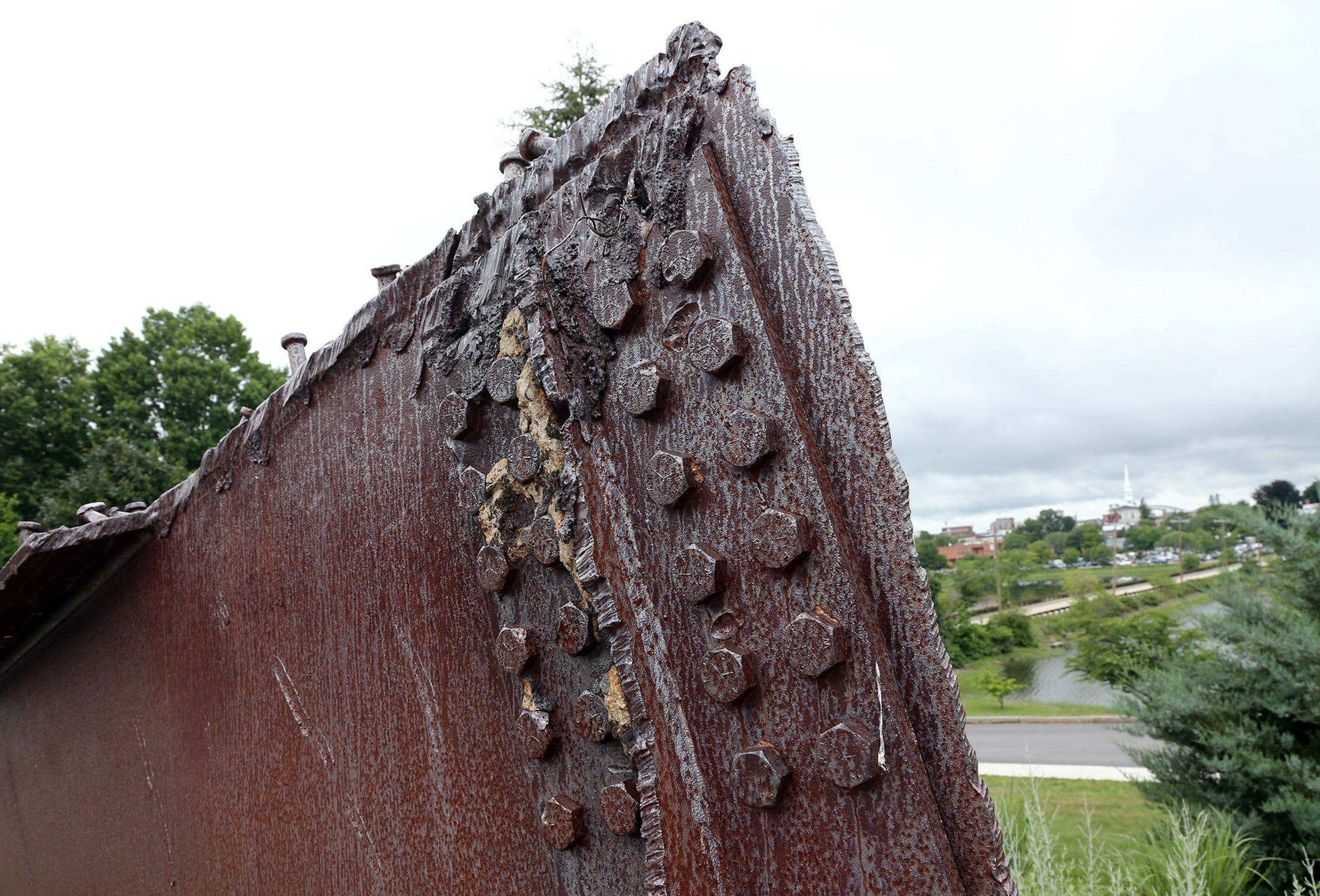
On crisp fall evenings, while coaching soccer at the high school sports stadium in Sandwich, Massachusetts, David DeConto is immersed in memory under the illuminated lights.
The stadium is named for his brother, U.S. Navy Capt. Gerald F. DeConto. He was killed while working at the Pentagon on Sept. 11, 2001.
Even more visceral for David DeConto is the 2,400-pound rusted steel girder that rests outside the stadium's entrance — a preserved piece of the fallen Twin Towers.
Twisted, warped and scarred, the steel remnants from one of the most harrowing days in American history have found resting places in small towns and cities across the country.
For many Americans, the steel transcends its physical properties, said Angus Gillespie, a professor of American Studies at Rutgers University.
The pieces serve as community memorials, akin to "sacred relics" within Christianity, like the churches that housed purported pieces of the True Cross upon which Christ was crucified, he said.
"There's power in, 'This is a true piece of the World Trade Center,'" said Gillespie. "That hits us not just mentally, but emotionally. And therein lies the power of these small-town memorials."
In the years following the 9/11 terrorist attacks, the Port Authority of New York and New Jersey distributed pieces of the World Trade Center to communities across the country. Many found homes in New England. Nearly 400 people from or with strong ties to the region lost their lives in the attacks.
Today, the once-sound bones of the World Trade Center serve as solemn spaces for grieving and remembrance, many say. They represent the human spirit and its resilience. And they'll allow for future generations to bear witness to history.
How did cities and towns get pieces of the Twin Towers?
The Port Authority of New York and New Jersey's artifact distribution program, which began in 2010 and concluded in 2016, distributed more than 1,890 pieces of World Trade Center steel to all 50 states and 10 nations. The items had been stored and preserved in a hangar at John F. Kennedy International Airport in New York since 2002.
Chosen from an application process, cities and towns had to agree they would use the Ground Zero steel in memorials and public displays. Many local fire, police and safety officials made "pilgrimages" to New York City to obtain their pieces and transport them back home, to serve as physical reminders of 9/11. Today, most sit in front of fire stations, while others are displayed outside city halls and at public parks.
Some communities didn't receive the steel directly from the Port Authority, but from organizations and individuals.
Other World Trade Center steel became part of the official 9/11 memorial at Ground Zero, and 7.5 tons went to build the bow of the Navy ship USS New York. New York City sold 175,000 tons of the remaining steel scrap.
'We're very proud to have it'
Across New England, there are more than 130 locations with World Trade Center steel, per numbers from the Port Authority and tracking done by the USA TODAY Network.
In Massachusetts, several communities across Cape Cod have pieces, including Chatham, Hyannis, Falmouth, Yarmouth, Dennis, Barnstable, Sandwich, Brewster and Bourne. At least 22 people who died on Sept. 11 had connections to Cape Cod and the Islands.
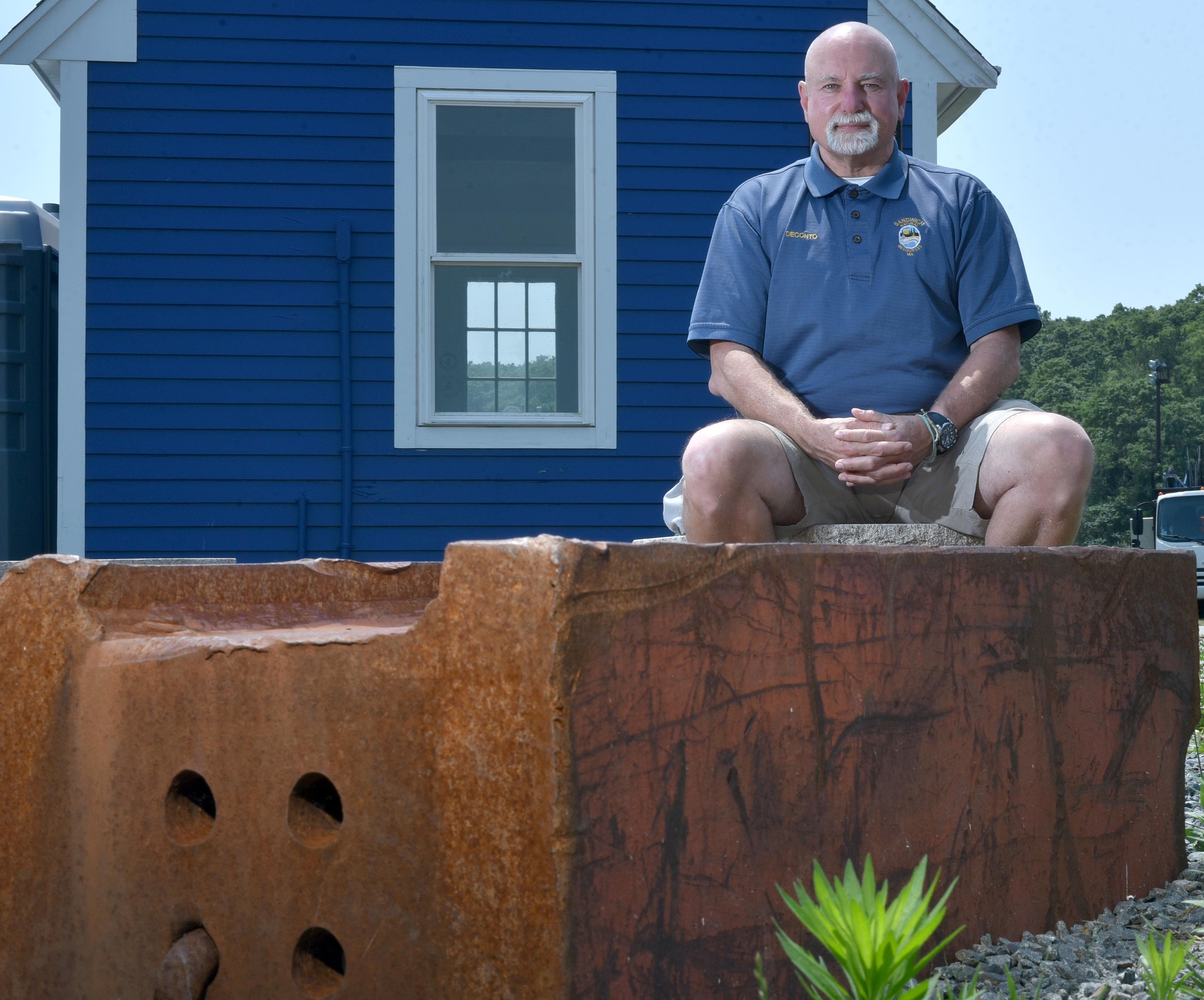
At Sandwich High School, the entrance to Captain Gerald F. DeConto USN Veterans Memorial Stadium is marked by a 2,400-pound piece of the South Tower. A 1975 Sandwich High graduate and standout athlete, "Jerry" DeConto was killed at the Pentagon on 9/11. He was 44 years old.
His brother, David DeConto, spent years fundraising for the stadium. The town of Sandwich ultimately received some of the last available steel pieces from Ground Zero, one of which was installed at the stadium in 2017.
"We're very proud to have it," said David DeConto, who is the town's director of natural resources and coaches girls soccer at the high school. "We couldn't think of a more fitting place for it."
The DeConto family wanted a memorial in keeping with Jerry's character, "something that could be a living memorial" and give back to the community, his brother said. The stadium, which opened in 2015, has a memorial circle at its entrance with bricks from donors, an American flag in the center and surrounding benches, one of which is the Ground Zero steel.
"It's amazing when you bring it to people's attention, the look on people's faces," David DeConto said. "It's almost a look of reverence. People come over and touch it, kids sit on it."
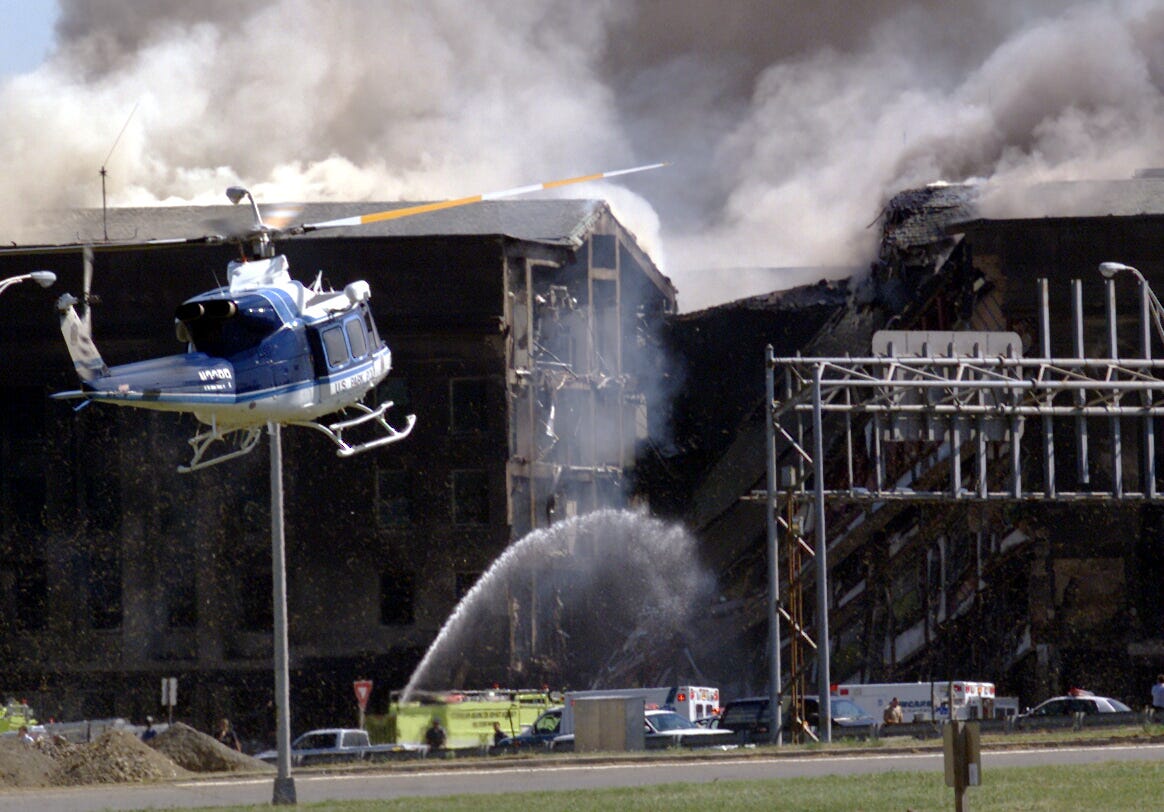
DeConto said his family's biggest fear is that his brother and 9/11 will be forgotten, "because there's a tragedy every week." The stadium and its steel artifact are ways to keep the story, and Jerry's memory, alive.
"It seems like yesterday to us," he said. "It is amazing the level of grief and rawness of nerves that can just come about. People often say to me, 'That must have been a terrible day.' It is (currently) terrible. It's terrible every day."
Brian Gallant, a retired Sandwich firefighter and EMT, was part of the group that traveled to New York City to pick up the steel. Gallant said the August day in 2015 when they arrived at Hangar 17 at JFK Airport "was beautiful."
"This was a great thing, especially for David's brother," he said.
Home of American 11 co-pilot Tom McGuinness pays tribute
The city of Portsmouth, New Hampshire, was home to Tom McGuinness, a co-pilot on American Airlines Flight 11, the first plane that was flown into the towers. He was a husband and father of two, and an active member of Bethany Church in nearby Greenland.
Ten people from New Hampshire were killed that day.
In 2015, Portsmouth was granted a 1,100-pound steel beam that now overlooks the city, displayed high on a hill outside the Police Department and City Hall.
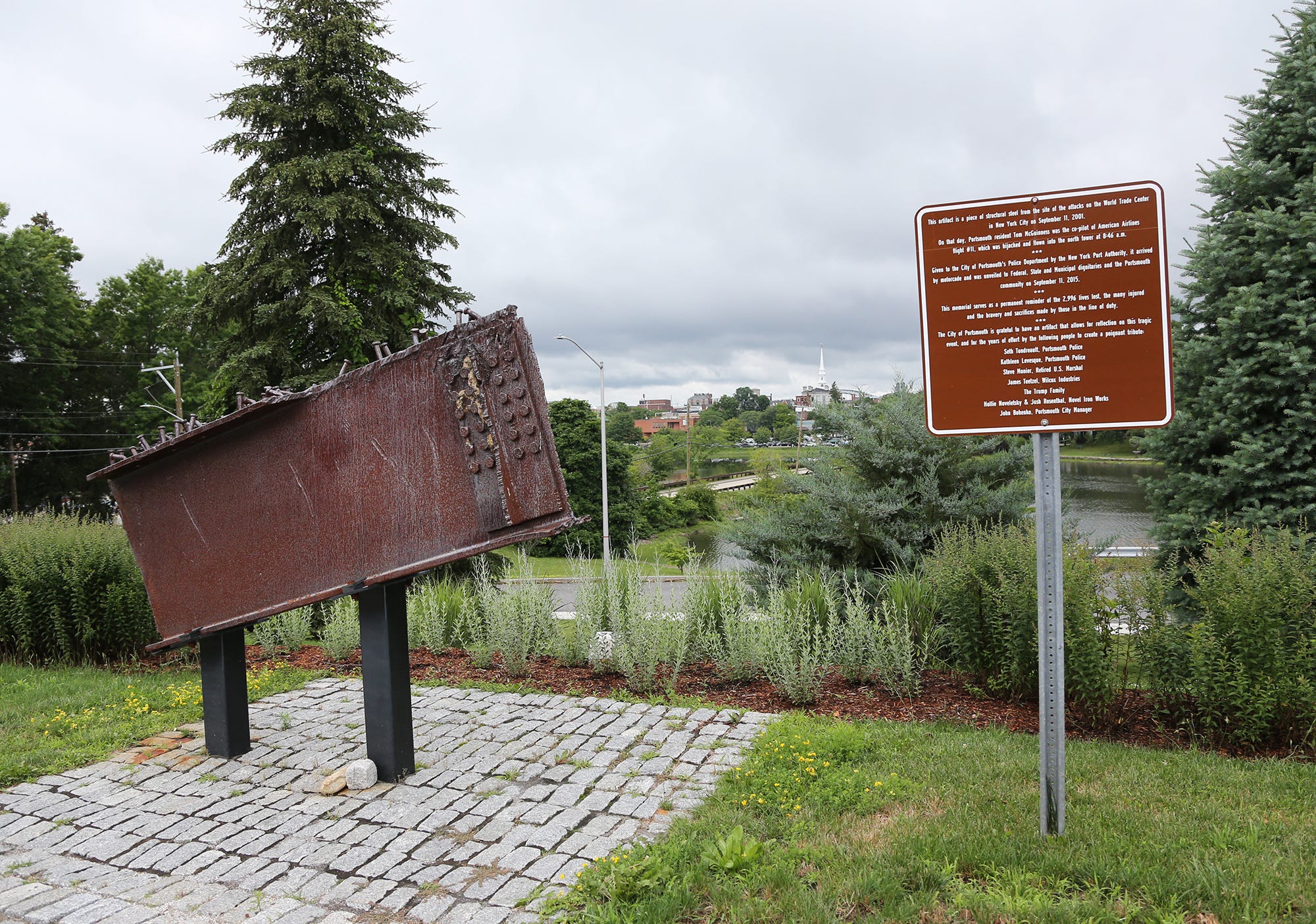
A member of the Portsmouth Fire Department since 1992, Fire Chief Todd Germain has vivid memories of 9/11. His former neighbors, a couple in their 60s, died on United Flight 175, the second plane to crash into the World Trade Center.
"For us in the fire service, when we see that steel, we're reminded of the sacrifice 343 firefighters made, and the hundreds who have suffered and died since then from working at the Ground Zero site," Germain said. "They continue to die to this day."
Credited with helping Portsmouth obtain the piece of history was Kathe Levesque, a now-retired executive assistant to the police chief, who viewed it as a personal mission and helped find sponsors to fund the trip to New York City.
Several Portsmouth police officers and representatives from nearby Novel Iron Works traveled to pick up the steel beam, which once in New Hampshire was greeted on the highway by dozens of veterans riding motorcycles and people lined up along the roads with American flags.
"The piece is now a backdrop for our ceremonies every year," said Germain, calling it "a stark reminder."
'Labor of love'
In 2011, Acton, Massachusetts, received its own piece of steel, to ultimately commemorate two residents who died on American Airlines Flight 11.
Philip Rosenzweig, who was on a business trip, and Madeline Amy Sweeney, a flight attendant, both left behind spouses and children.
Joined on the journey by Sweeney's husband, Mike, the Acton 9/11 Memorial Fund traveled to New York City to obtain the artifact. Madeline Amy Sweeney is credited with relaying initial information about the hijackers to authorities on the ground that proved invaluable in learning of the true nature of the events that were occurring.
Today, the Acton memorial is located outside the town's public safety building, featuring stones for Sweeney and Rosenzweig. The deformed steel sprouts upwards out of the memorial's base.
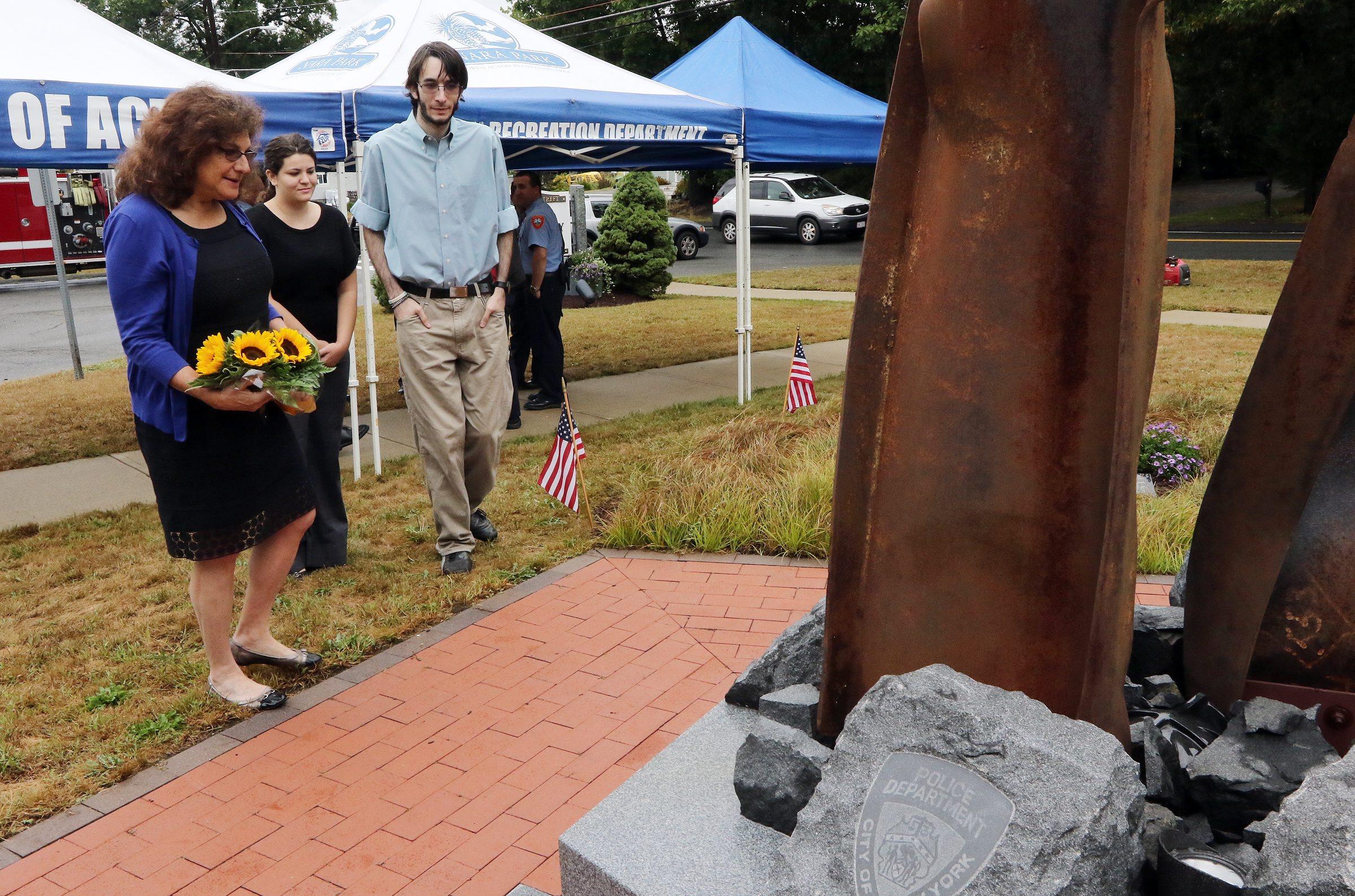
Based in Beverly, Massachusetts, Task Force 1 FEMA Urban Search and Rescue responded to New York City in the initial days after the attacks. Years later, members obtained a preserved beam that had spanned the 93rd to 95th floors of the North Tower to display at their headquarters.
Gerry Giunta, who served as rescue manager during the 9/11 response and later became the fire chief of Salem, built most of the surrounding stone memorial himself, calling it "a labor of love" ahead of its dedication in 2016. The helmet Giunta wore during his time working at Ground Zero is part of the collection at the 9/11 Memorial and Museum in New York City.
Each millimeter from the steel's placement to the bottom of the memorial at the Beverly headquarters represents one firefighter who died that day.
Physical, emotional significance of World Trade Center steel
Gillespie, of Rutgers University, has likened the World Trade Center to the Eiffel Tower or Big Ben, in terms of what the structure represented to its country.
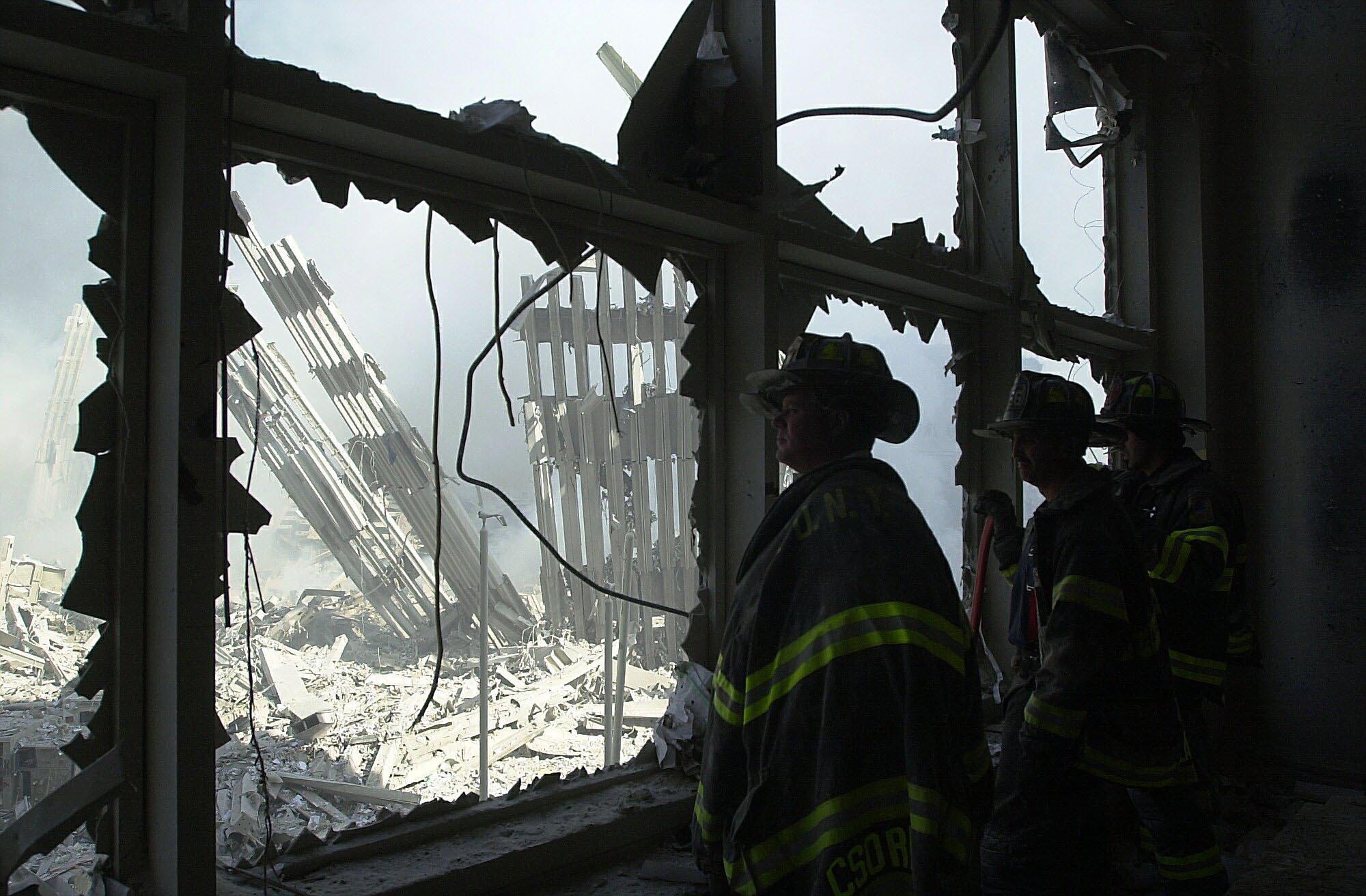
For years, Gillespie's research has focused on the World Trade Center — both before and after 9/11. He penned a book in 1999, well before the terrorist attacks, titled "Twin Towers: The Life of New York City's World Trade Center."
On the morning of 9/11, he arrived home to 67 voicemails from reporters, he said. He spent the entire week answering questions about the buildings.
Gillespie said Osama Bin Laden chose the World Trade Center because of its symbolism of "American economic might" and its proximity to Wall Street.
Like Gillespie's observation, a Ph.D. dissertation at the University of Pittsburgh in 2017 also explored the concept of World Trade Center steel as "sacred secular relics;" the author having visited 70 memorials during her research, including several in Massachusetts.
"The web of local memorials, which incorporated the same type of artifact and similar references, created a memoryscape...," wrote Senem Guler-Biyikli. "The scale of this memoryscape, which covers the whole country, is also a marker of 9/11’s exceptionality."
Guler-Biyikli labeled those who made the memorials possible — first responders, relatives of victims and others — as "agents of memory."